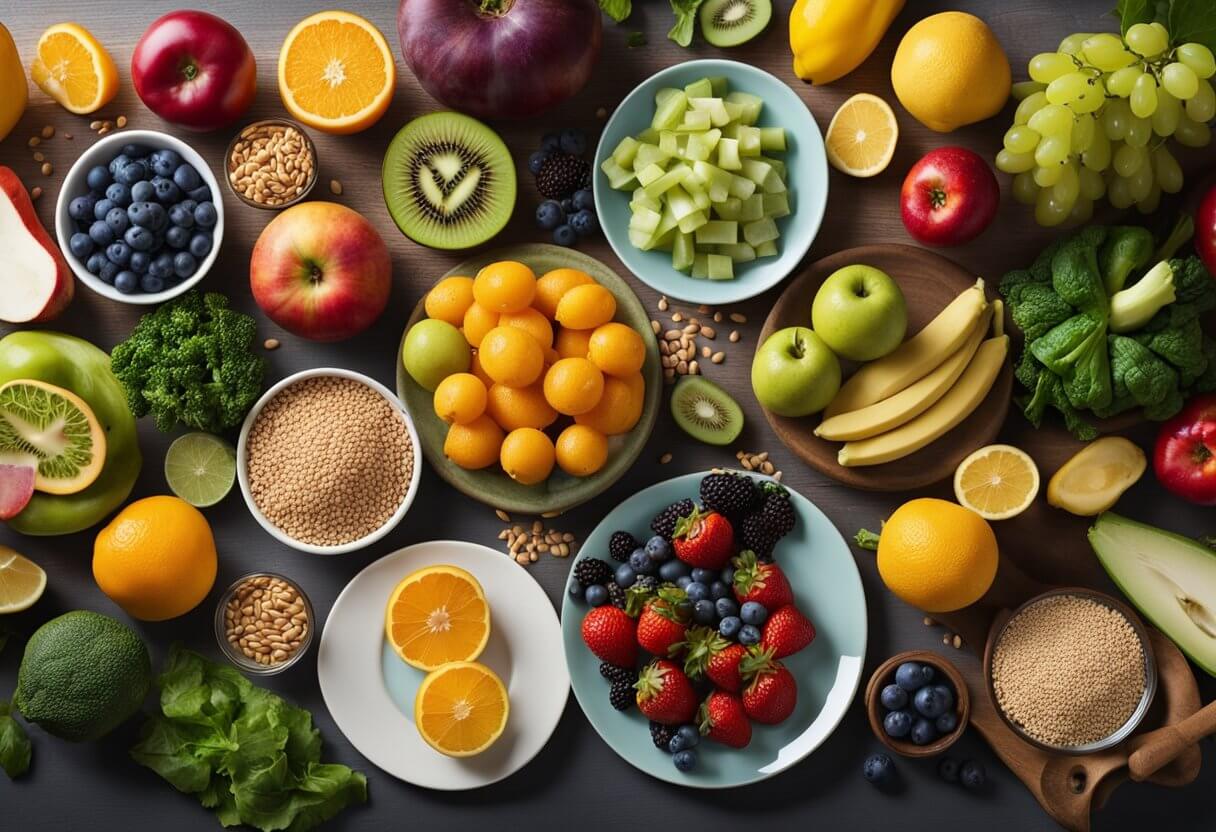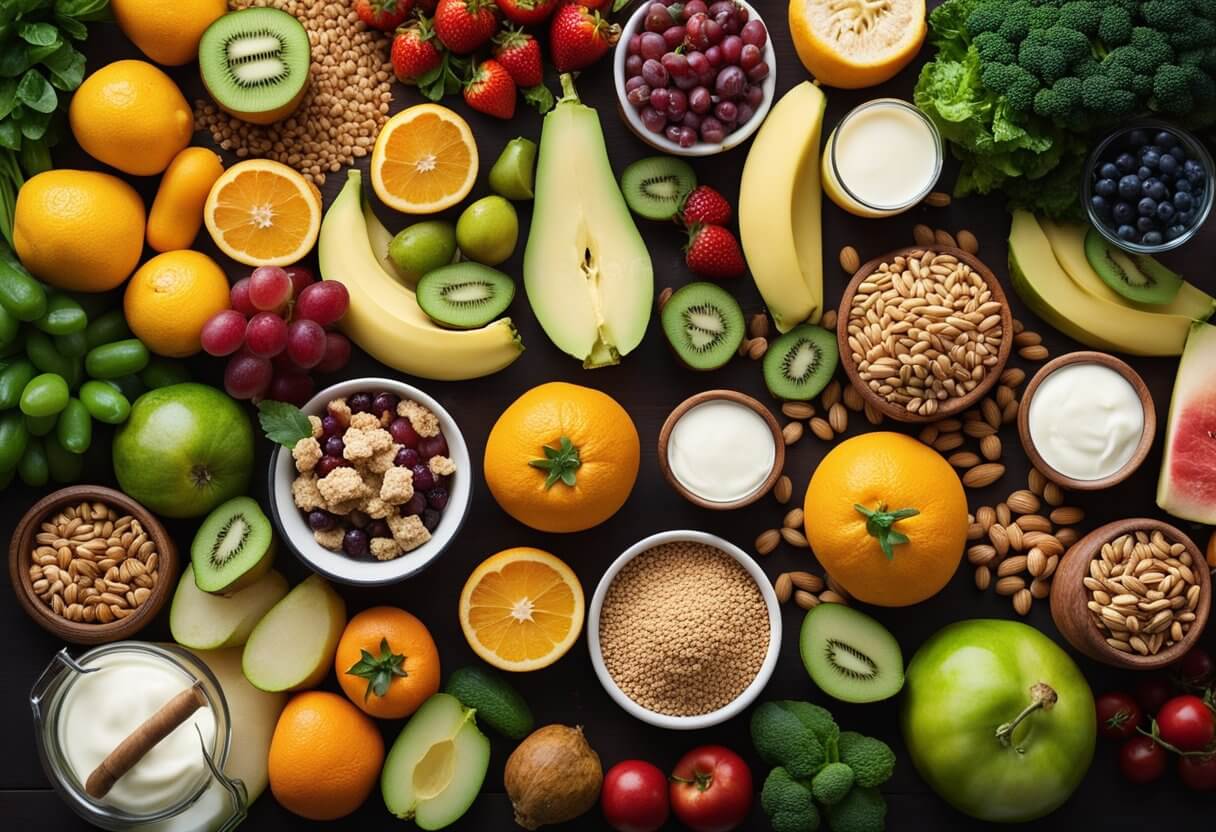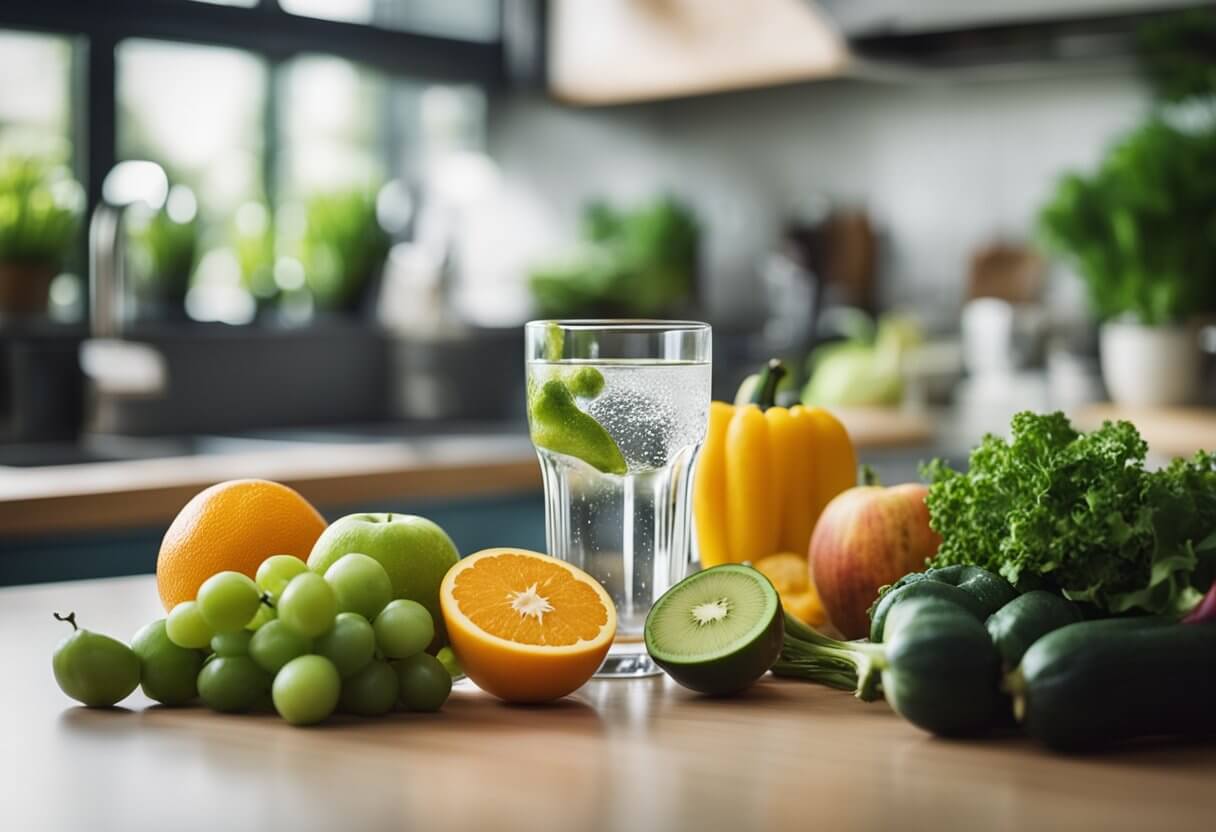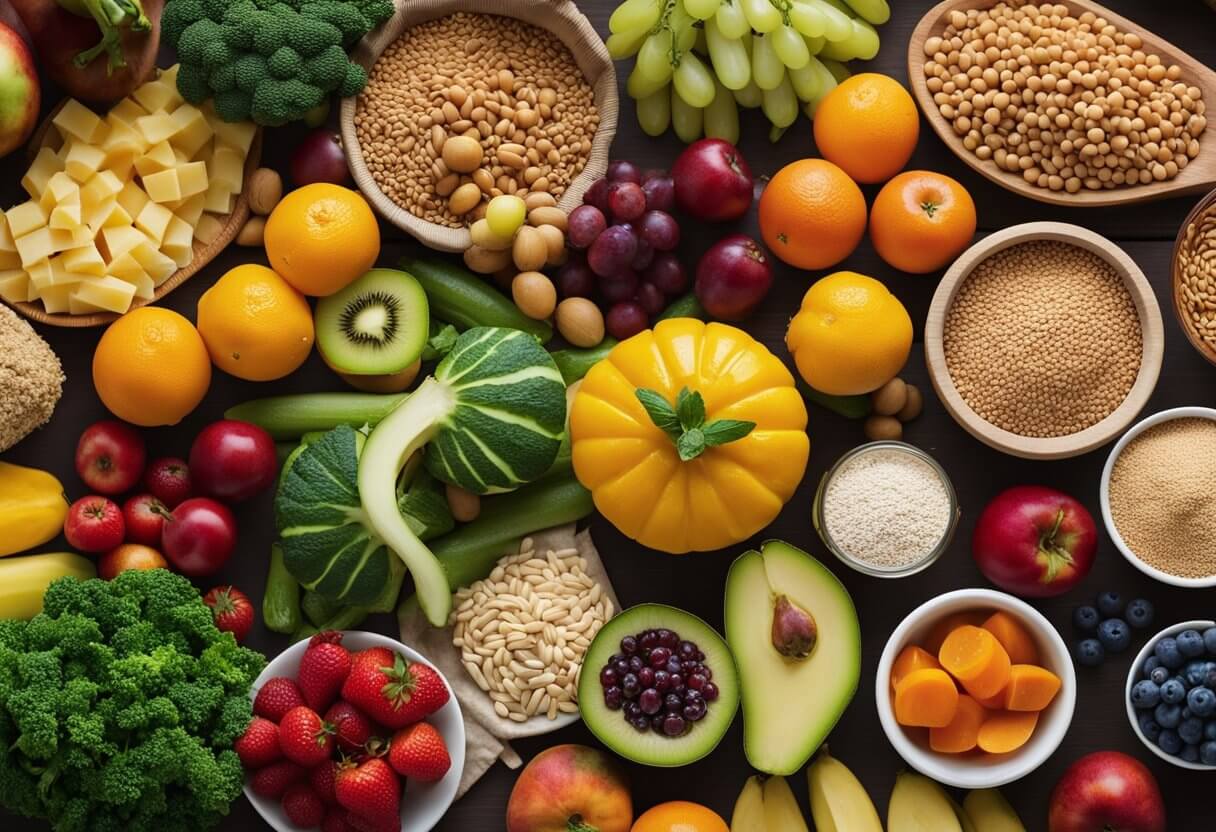Welcome to this Healthy Eating for Older Adults article. Eating well is essential for everyone, but it takes on new importance as people age. Healthy eating for older adults can improve energy levels, enhance overall health, and support well-being. Understanding how nutrition needs change can help in making better food choices. But before we continue, a quick disclaimer!
This article offers experienced and well-researched information but isn’t a substitute for medical advice. Consult your healthcare provider for personal guidance.

Thanks, back to the article. Choosing a balanced diet rich in nutrients is crucial. Older adults may need fewer calories but still require vital vitamins and minerals. Staying hydrated is also essential for maintaining health and function, especially as thirst cues diminish with age.
By being mindful of nutrition and hydration, older adults can live healthier lives. Learning about dietary guidelines and making suitable choices is vital in this journey toward better health.
Key Takeaways
- Nutritional needs often change with age, requiring careful attention.
- A balanced diet contributes to energy and overall health for older adults.
- Maintaining hydration is crucial for health and daily function.
Understanding Nutritional Needs in Aging

As people age, their bodies undergo changes that affect their nutritional needs. Older adults must focus on specific nutrients, vitamins, and protein intake to maintain health and well-being.
Nutrients and Aging
Aging can impact how nutrients are absorbed and used in the body. Important nutrients include fiber, calcium, and vitamin D.
- Fiber helps with digestion and can prevent constipation. Older adults should aim for at least 25 grams of fiber daily, found in fruits, vegetables, and whole grains.
- Calcium is vital for bone health. Women over 50 and men over 70 need about 1,200 mg per day, which can come from dairy, leafy greens, and fortified foods.
- Vitamin D supports calcium absorption and helps maintain bone strength. Adults should get 800 to 1,000 IU daily, through sunlight and fortified foods.
Vitamins and Minerals
Vitamins and minerals play important roles in aging. Older adults may have increased requirements for certain vitamins.
- Vitamin B12 is essential for nerve function and red blood cell production. Absorption can decrease with age. It is recommended to consume 2.4 micrograms daily from sources like meat, fish, and fortified cereals.
- Folate helps with cell division and is important for those taking certain medications. The recommended intake is 400 micrograms from leafy greens, beans, and citrus fruits.
- Antioxidants like vitamins C and E may help reduce inflammation and support immune function. They are found in colorful fruits and vegetables.
Protein and Muscle Mass
Protein is critical for maintaining muscle mass, which tends to decrease with age. It helps prevent frailty and supports recovery from illness or injury.
Older adults should aim for 1.2 to 2.0 grams of protein per kilogram of body weight.
Good sources include:
- Lean meats such as chicken and turkey
- Fish, especially fatty types like salmon for omega-3 fatty acids
- Plant-based options like beans, lentils, and nuts
A balanced intake of protein throughout the day maximizes muscle synthesis. Regular strength training combined with proper nutrition can enhance overall strength and physical health.
Developing a Balanced Diet for Older Adults

Healthy eating for older adults means creating a balanced diet to maintain good health. Key areas include the right food groups, hydration, and limiting certain ingredients. Focusing on specific nutrients can help enhance well-being.
Incorporating Fruits and Vegetables
Fruits and vegetables should play a significant role in an older adult’s diet. These foods are rich in vitamins, minerals, and antioxidants. Eating a variety of colorful fruits and vegetables can help boost energy and support the immune system.
Older adults should aim for at least 5 servings of fruits and vegetables each day. This can include fresh, frozen, or canned options without added sugars or salt. Examples of healthy choices are berries, leafy greens, carrots, and apples.
Choosing whole fruits over juices is beneficial since they contain more fiber, which aids digestion. Fiber helps prevent constipation and may lower the risk of chronic diseases.
The Role of Whole Grains and Fiber
Whole grains should be a staple in a balanced diet for older adults. Foods like brown rice, quinoa, and whole-grain bread are excellent sources of fiber. Fiber is essential for digestive health and helps maintain heart health by lowering cholesterol levels.
Incorporating at least 3 servings of whole grains into daily meals is advisable. A serving size could be one slice of whole-grain bread, half a cup of cooked brown rice, or a cup of oatmeal.
Older adults often may not get enough fiber. This can lead to digestive issues. Increasing fiber intake gradually and drinking plenty of water can help prevent discomfort.
Choosing Healthy Proteins
Healthy protein sources are vital for maintaining muscle mass and repairing tissues. Lean meats, poultry, fish, eggs, beans, and nuts are good options. Seafood, such as salmon and trout, is particularly beneficial due to its omega-3 fatty acids, which support heart health.
Older adults should focus on incorporating 2-3 servings of protein into their meals each day. A serving can be a palm-sized piece of meat, one egg, or half a cup of beans.
Plant-based proteins like lentils and peas also provide essential nutrients and are often lower in saturated fat compared to animal proteins. Balancing protein sources helps keep the diet diverse and nutritious.
Limiting Sodium and Added Sugars
Limiting sodium and added sugars is crucial for maintaining overall health. High sodium intake can lead to high blood pressure, which is common in older adults. Reducing salt in cooking and choosing low-sodium products can help manage this risk.
Added sugars also contribute to various health issues, including diabetes and heart disease. Older adults should be mindful of sugar in processed foods and drinks. Reading labels can help identify hidden sugars.
Aim for no more than 2,300 mg of sodium per day and limit added sugars to less than 10% of total daily calories. This can improve heart health and support a healthier lifestyle.
Maintaining hydration is also important. Drinking water throughout the day helps keep bodily functions running smoothly.
Staying Hydrated and Understanding Fluids

Staying hydrated is crucial for older adults. Proper fluid intake can support health in many ways. It helps with bodily functions and can even improve mood.
Water is the Main Source of Hydration
Water is the best choice for hydration. It has no calories, sugar, or additives. Older adults should aim for 6 to 8 cups of water daily, but needs can vary.
Signs of dehydration include dry mouth, fatigue, and confusion. Drinking small amounts of water throughout the day can help avoid these issues. Keeping a water bottle nearby can remind you to drink more often.
Foods with high water content, like fruits and vegetables, also contribute to hydration. Examples include cucumbers, strawberries, and watermelon. Including these foods in meals ensures better fluid balance.
Healthy Beverage Choices
Besides water, other beverages can aid hydration. Herbal tea and decaffeinated coffee are great options. Both can count towards daily fluid intake without leading to dehydration.
Juice can also be a choice but should be consumed in moderation. Choosing 100% fruit juice and watching for added sugars is best. Milk, whether dairy or almond, adds both hydration and nutrients like calcium and vitamin D.
Hydration doesn’t have to come only from drinking. Older adults should think about their overall fluid intake from different sources. Making smart beverage choices can enhance health and well-being.
Navigating Dietary Guidelines and Resources

Understanding dietary guidelines and available resources is essential for older adults. These tools help in making informed food choices, ensuring safety in food preparation, and accessing necessary assistance.
Using MyPlate as a Guide
MyPlate is a helpful tool designed to guide healthy eating. It shows how to balance different food groups on a plate. Older adults should focus on filling half of their plate with fruits and vegetables.
The other half can include whole grains and proteins, such as lean meats or beans. It’s important to choose low-fat or non-fat dairy products. Using MyPlate can make meal planning easier and promote better nutrition.
Food Safety for Older Adults
Food safety is crucial for older adults, as they are more vulnerable to foodborne illnesses. They should practice good hygiene by washing hands before preparing food. They need to keep raw and cooked foods separate to prevent contamination.
Storing food properly is vital. Older adults should check expiration dates and discard any expired items. Cooking food to the correct temperature is also important. Using a food thermometer can help ensure that meats are cooked safely.
Assistance Programs and Services
Several programs can help older adults access healthy food options. The Supplemental Nutrition Assistance Program (SNAP) provides financial help for purchasing food. Many grocery stores accept SNAP benefits, allowing seniors to buy nutritious items.
Meal delivery services also offer convenient options. These services provide meals tailored to specific dietary needs. Additionally, some communities have programs that deliver groceries directly to seniors’ homes, ensuring they have access to healthy foods.
Lifestyle Considerations for Healthy Aging
Emphasizing an active lifestyle and proper nutrition is essential for healthy aging. Older adults can manage chronic conditions, support mental health, and maintain overall well-being through specific lifestyle choices.
Physical Activity and Nutrition
Regular physical activity is vital for older adults. It helps maintain balance, strength, and flexibility. Activities like walking, swimming, or yoga can reduce the risk of falls and fractures.
Nutrition plays a key role too. A diet rich in fruits, vegetables, lean proteins, and whole grains supports heart health and helps control blood pressure. Understanding the Nutrition Facts Label is important for making informed food choices.
Older adults should aim for at least 150 minutes of moderate exercise each week. This can include everyday activities, like gardening or playing with grandchildren. Staying active supports a healthy weight and lowers the risk of chronic diseases.
Managing Chronic Conditions with Diet
Chronic diseases, such as heart disease, diabetes, and hypertension, are common in older adults. A healthy diet can help manage these conditions. For instance, a heart-healthy diet focuses on reducing saturated fats and sodium.
Eating foods high in fiber and low in sugar can aid in managing diabetes. This includes whole grains, fruits, and vegetables. It’s also wise to control portion sizes to avoid weight loss or malnutrition.
Older adults should stay informed about ways to prevent foodborne illness. Safe food handling and proper cooking can help reduce the risk of illness, particularly for those with weakened immune systems.
Mental Health and Nutrition
Nutrition affects mental health significantly. A balanced diet can help reduce the risk of depression and anxiety in older adults. Foods rich in omega-3 fatty acids, like fish, can enhance brain function and mood.
Staying hydrated is also crucial. Dehydration can lead to confusion and other mental health issues. Encouraging daily water intake is a simple way to support cognitive function.
Social eating can boost mental well-being. Sharing meals with family or friends can create connections and enhance the enjoyment of food. This can combat loneliness, which is important for overall health.
Healthy Eating for Older Adults – Summary
Thanks for reading this healthy eating for older adults article.
Healthy eating becomes increasingly important for older adults because their nutritional needs change with age. A balanced diet includes plenty of fruits, vegetables, whole grains, lean proteins, and calcium- and vitamin D–rich foods to support bone health. Hydration is also crucial, as older adults often experience diminished thirst cues.
Paying attention to essential vitamins, minerals, and protein intake helps maintain muscle mass and manage chronic conditions. Combining proper nutrition with an active lifestyle can improve overall health, support mental well-being, and reduce the risk of age-related health issues.
Ready to take the next step in healthy aging? Check out our other article: Good Exercise for Seniors to Discover Safe and Effective Ways to Stay Active and Strong!






